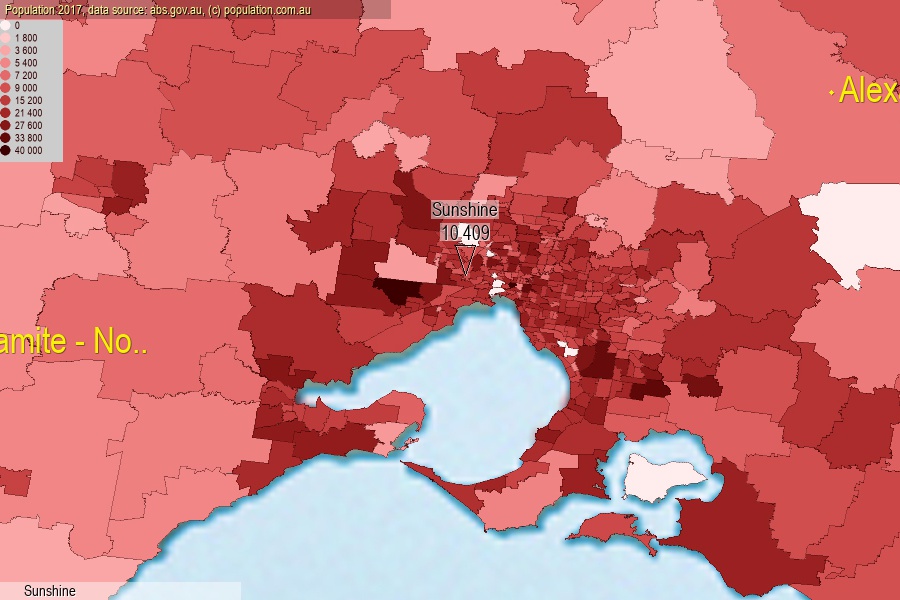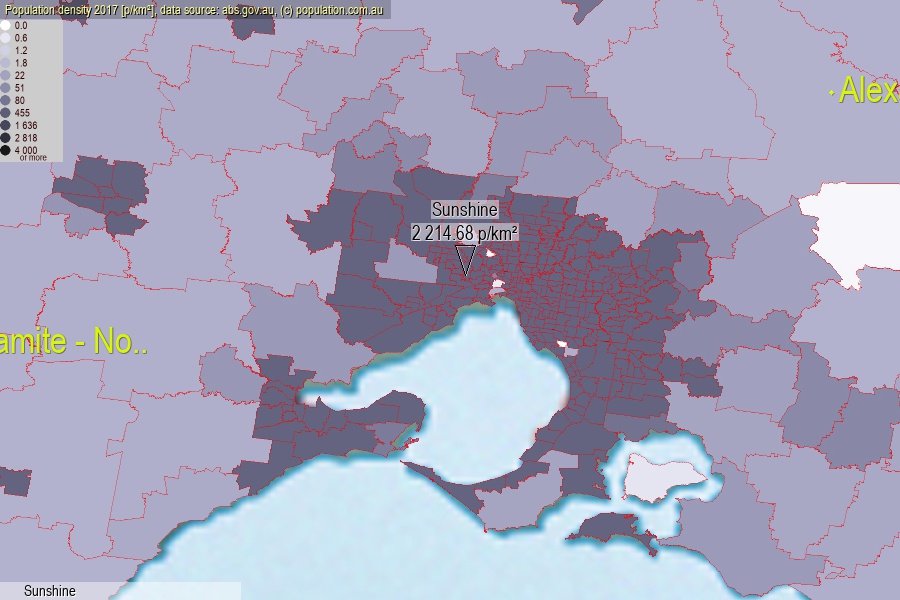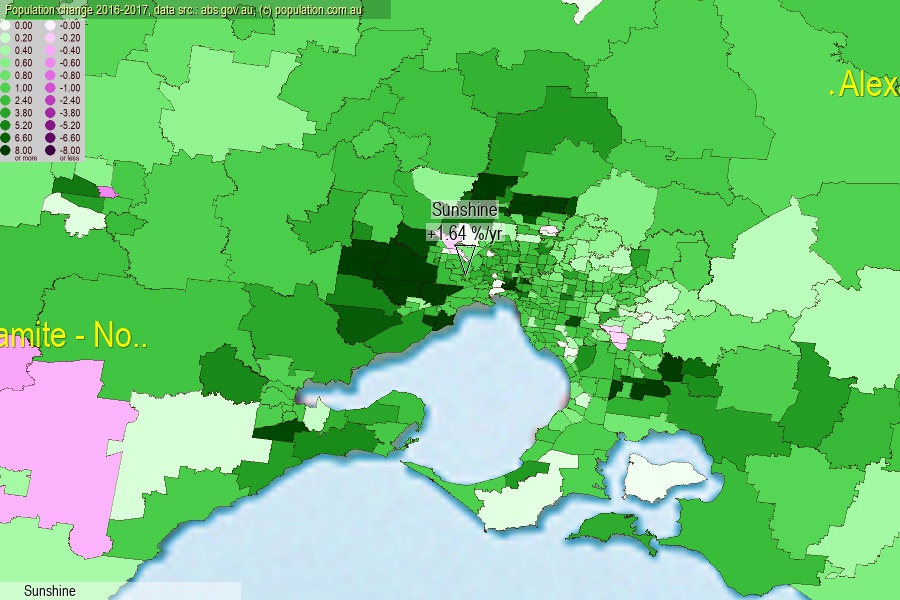 population.com.au
population.com.auLast official estimated population of Sunshine (as Statistical Area Level 2) was 10 409 people (on 2017-06-30)[2]. This was 0.04% of total Australian population and 0.162% of VIC population. Area of Sunshine is 4.70 km², in this year population density was 2 214.68 p/km² . If population growth rate would be same as in period 2016-2017 (+1.64%/yr), Sunshine population in 2025 would be 11 856. [0]



Click to enlarge. Sunshine is located in the center of the images.
Population [people], population density [p./km²] and population change [%/year] [2]
View borders » (new window) [4]
[1991-1992] -0.27 %/Yr.
[1992-1993] -0.21 %/Yr.
[1993-1994] -0.53 %/Yr.
[1994-1995] -0.94 %/Yr.
[1995-1996] -0.84 %/Yr.
[1996-1997] -1.07 %/Yr.
[1997-1998] -0.83 %/Yr.
[1998-1999] -0.70 %/Yr.
[1999-2000] -0.82 %/Yr.
[2000-2001] -0.42 %/Yr.
[2001-2002] +0.65 %/Yr.
[2002-2003] +0.76 %/Yr.
[2003-2004] +0.70 %/Yr.
[2004-2005] +1.15 %/Yr.
[2005-2006] +1.23 %/Yr.
[2006-2007] +1.53 %/Yr.
[2007-2008] +2.80 %/Yr.
[2008-2009] +2.59 %/Yr.
[2009-2010] +2.16 %/Yr.
[2010-2011] +1.19 %/Yr.
[2011-2012] +1.67 %/Yr.
[2012-2013] +2.41 %/Yr.
[2013-2014] +2.34 %/Yr.
[2014-2015] +2.44 %/Yr.
[2015-2016] +1.57 %/Yr.
[2016-2017] +1.64 %/Yr.
[0] Calculated with linear interpolation from officially estimated population
[1] Read more about SA2 and Australian Statistical Geography Standard (ASGS) on abs.gov.au
[2] Population data from Australian Bureau of Statistics (Population and density: 2017; change: 2016-2017)
[3] Digital Boundaries: Australian Statistical Geography Standard (ASGS) 2016.
[4] Border coordinates are simplifyed using Ramer-Douglas-Peucker algorithm.